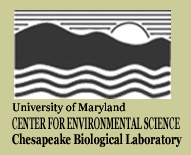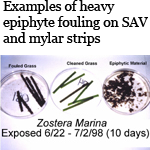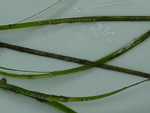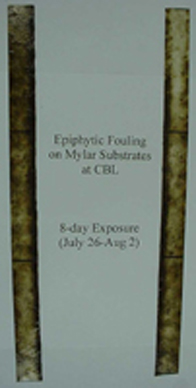While the distribution of SAV depends on a variety of parameters, light availability at the leaf surface is a primary factor determining where SAV will grow and survive. In addition to light attenuation by the water column, light is also attenuated by the matrix of organic and inorganic material that accumulates on the leaves. This material is typically referred to as epiphytes. By knowing the rate at which epiphytes can accumulate on SAV, we can better predict whether SAV will thrive at a particular restoration site, or whether existing SAV are receiving sufficient light to remain healthy. Measuring the amount of epiphyte material and estimating its light attenuation potential requires some special techniques. For several years we have used artificial substrates (thin strips of Mylar plastic) to measure epiphytic fouling rates all across Chesapeake Bay and its tributaries. By deploying these epiphyte collectors in a variety of locations for standardized periods of time (6-8 days) we are easily able to compare fouling rates among various locations, as shown in the figure below.
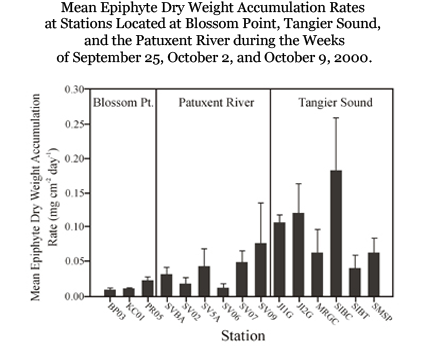
The use of transparent Mylar as a substrate material allows for estimation of light attenuation through the intact epiphyte layer. This was accomplished with the Light Attenuation Measurement Apparatus, or LAMA. By also measuring the associated biomass on each strip, we have developed strong relationships that now allow us to predict light attenuation from epiphyte biomass estimates which show that even small increases in epiphyte biomass can lead to large increases in light attenuation.
Finally, by comparing results from a variety of studies we are beginning to learn what environmental and water quality parameters are necessary for high levels of epiphyte fouling in Chesapeake Bay. Details of these methods and the results from various studies can be found in reports available for download.
